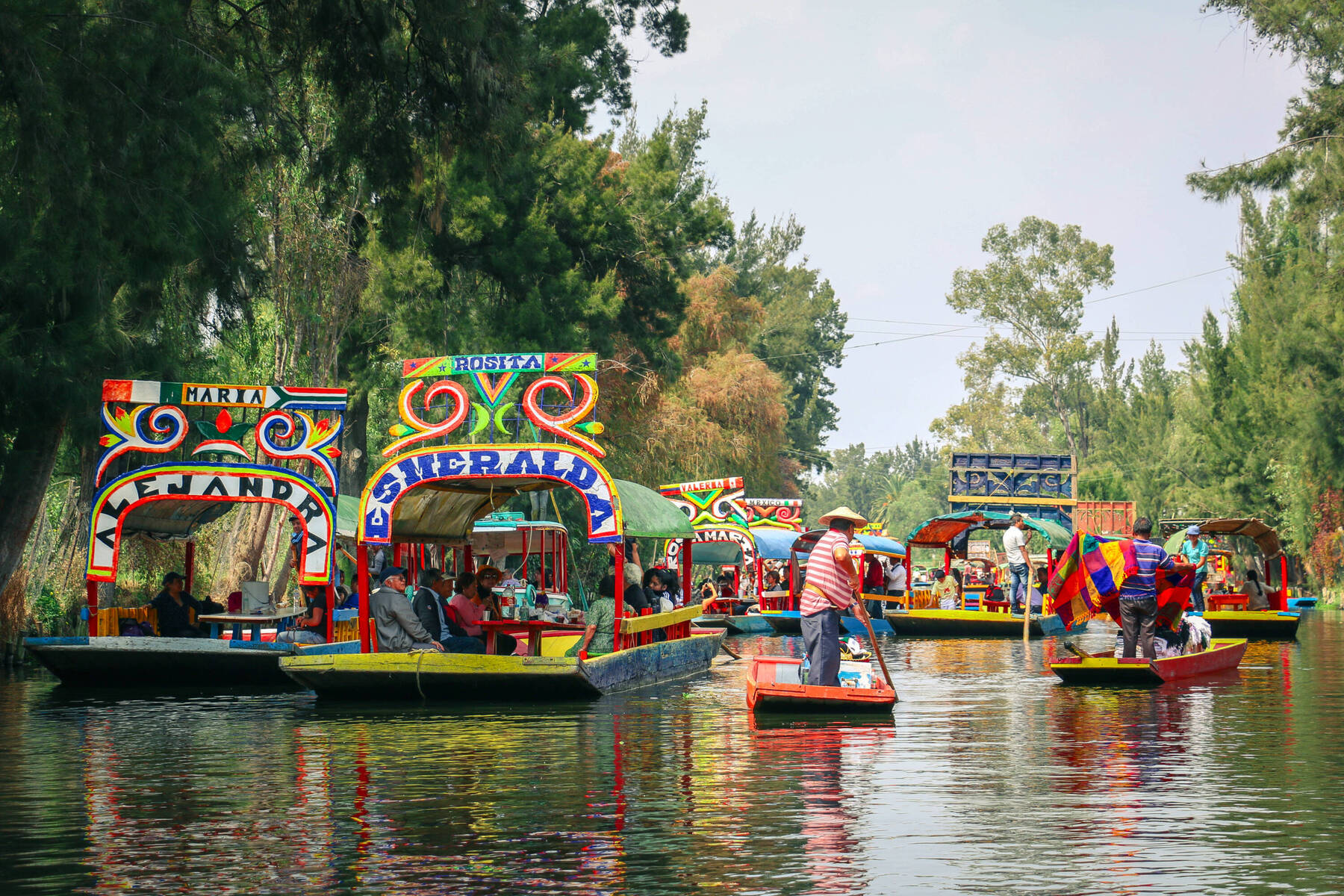Xochimilco Market and Canals
Shop in Xochimilco Market where women sit amongst wheelbarrows laden with produce from Xochimilco Canals’ gardens. Discover foods such as pink bananas, tuna (cactus fruit), cactus leaves, huitlacoche (a fungus growing on corn, known as Mexican truffle), and the colourful range of mole – powders or pastes used in sauces. Try out quesadillas, tlacoyos, Oaxaca cheese, or blue corn.
The other highlight in Xochimilco is riding a local boat, trajinera, on Xochimilco Canals, a UNESCO World Heritage Site. On Sundays they’re jammed with boats as locals celebrate special occasions or just a day off, being punted down the tree or garden-lined, sun-dappled waterways to the sounds of mariachi bands or more modern music.
Located approximately 25 kilometres south of central Mexico City, Xochimilco is easily reached via the train, ‘Tren Ligero’, from Tasqueña Metro station.























Comments